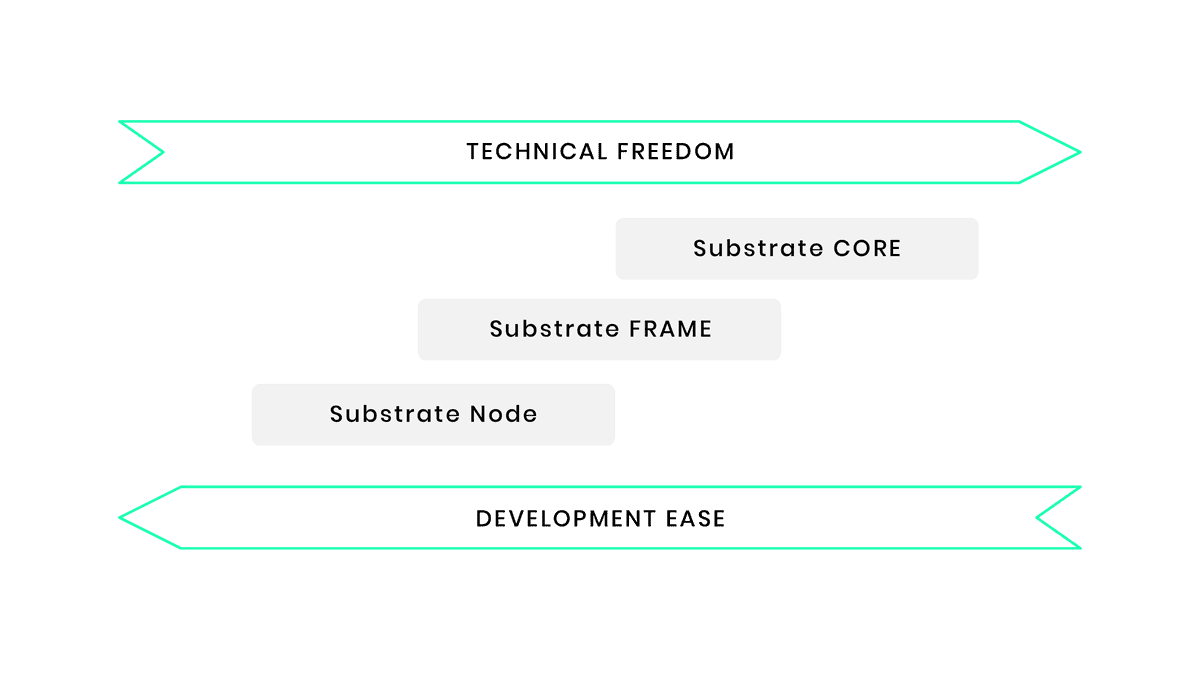Welcome
This is the official documentation hub for Substrate developers. The purpose of this resource is to help readers understand the intricacies of blockchain development with Substrate. This guide is broken down into several sections that explain the principles and design decisions that Substrate is built on as well as the specific skills needed to be an effective Substrate blockchain developer.
In order to get the most out of Substrate, you should have a good knowledge of computer science and basic blockchain concepts. Terminology like header, block, client, hash, transaction and signature should be familiar. Substrate is built on the Rust programming language, which makes use of novel design patterns to enable development of code that is safe and fast. Although you don't need to know Rust to get started with Substrate, a good understanding of Rust will allow you to become a better Substrate developer. Check out the excellent resources provided by the Rust community to build your Rust development skills.
Substrate takes a modular approach to blockchain development and defines a rich set of primitives that allows developers to make use of powerful, familiar programming idioms.
Usage
Substrate is designed to be used in one of three ways:
With the Substrate Node: You can run the pre-designed Substrate Node and configure its genesis block. In this case, you just need to supply a JSON file and launch your own blockchain. The JSON file allows you to configure the genesis state of the modules that compose the Substrate Node's runtime, such as: Balances, Staking, and Sudo. You can learn more about running a Substrate node in the Create Your First Substrate Chain and Start a Private Network tutorials.
With Substrate FRAME: You can easily create your own custom runtime using FRAME (Framework for Runtime Aggregation of Modularized Entities), which is what is used to build the Substrate Node. This affords you a large amount of freedom over your blockchain's logic, and allows you to configure data types, select from a library of modules (called "pallets"), and even add your own custom pallets. The Substrate Developer Hub Node Template is a helpful starting point for projects like this. To learn more, see the tutorials to Build a dApp and Add a Pallet.
With Substrate Core: The entire FRAME system can be ignored, and the runtime can be designed and implemented from scratch. This could be done in any language that can target WebAssembly. If the runtime can be made to be compatible with the abstract block authoring logic of the Substrate node, then you can simply construct a new genesis block from your Wasm blob and launch your chain with the existing Rust-based Substrate client. If not, then you will need to alter the client's block authoring logic, and potentially even alter the header and block serialization formats. In terms of development effort, this is by far the most difficult way to use Substrate, but also gives you the most freedom to innovate.
Substrate allows developers to make choices between technical freedom and ease of development in every step of their design decisions. The diagram below illustrates the nature of this flexibility.

Next steps
Learn more
- Refer to the developer documentation for the FRAME system for runtime development.
- Learn how to create rich client applications for any Substrate-based chain by using the Polkadot-JS family of libraries.
- Dive deep into advanced topics, like Substrate's SCALE encoding, consensus mechanisms, cryptography, and storage implementation.
Examples
- Follow our tutorials to learn about building and running blockchains with Substrate and FRAME.
- Refer to our how-to guides to find working code based examples that demonstrate solutions to common problems.
References
- Check out the Rust reference documentation that ships with the Substrate code base.